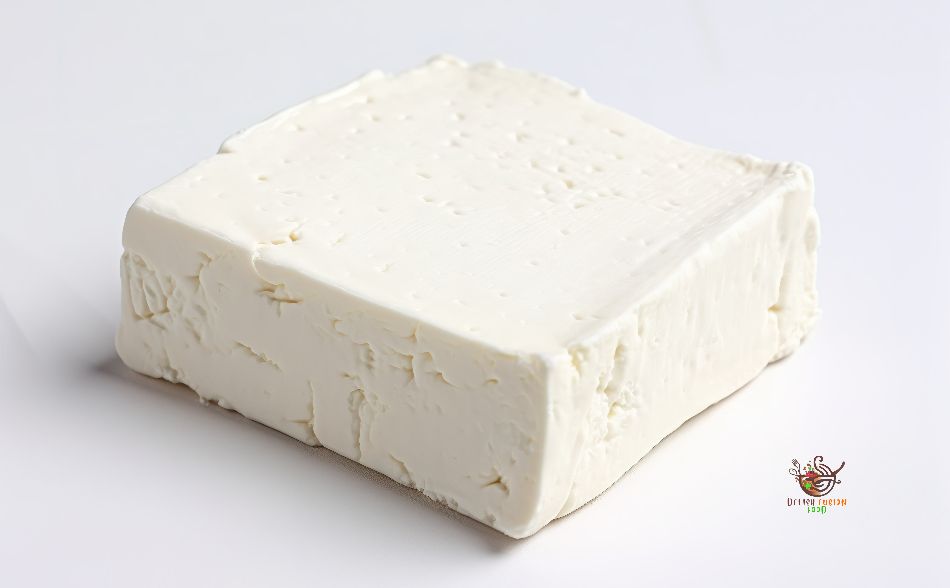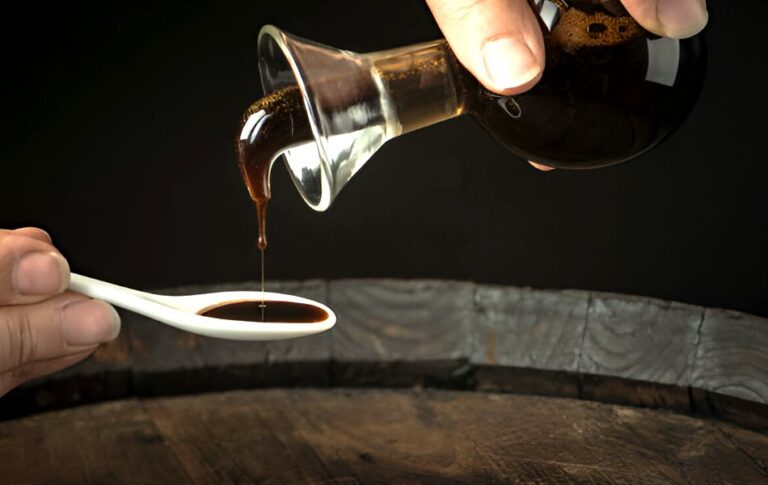Spice It Up: 11 Exciting Pecorino Cheese Substitutes
When a recipe demands Pecorino cheese but you’re out, cheese enthusiasts can find suitable alternatives to match the distinct nutty, slightly salty flavor. Explore this article for the finest Pecorino cheese substitutes in various scenarios.
What’s Pecorino Cheese?
Pecorino cheese is one of the world’s oldest cheeses and has roots dating back to Ancient Rome. Soldiers were allotted a weekly one-ounce ration, believed to provide added strength for battle. While not magical, this Italian hard cheese, derived from the word “Pecora,” meaning sheep in Italian, boasts a unique profile – simultaneously milky, creamy, firm, granular, smooth, and nutty.
Pecorino comes in three forms: firm and nutty stagionato, semi-stagionato, and the softer, milder fresco. Its edible rind is often rubbed with olive oil, though it may be inedible if dipped in wax or paraffin. Pecorino grates and slices well, with a rich, deep, and complex flavor that goes a long way.
You can find Pecorino in higher-end grocery stores, ideally in its whole form. It’s worth noting that Pecorino variations may incorporate honey, spices, peppercorns, or even food-safe molds for added flavors. However, Pecorino is not suitable for vegetarians due to the presence of rennet.
While most Pecorino is made in Sardinia, it can be produced elsewhere in Italy. This cheese-making tradition has been cherished for centuries, with many Romans favoring Pecorino over Parmesan Reggiano. Whether it surpasses its cow’s milk counterpart is a matter of personal preference. In the meantime, explore these Pecorino substitutes.
Varieties of Pecorino Cheese
Pecorino cheese comes in several popular varieties, all holding DOP (Denominazione di Origine Protetta) status under EU law:
- Pecorino Romano: Primarily made in Sardinia, it traces back to Roman times and is produced in the Lazio region, offering a robust flavor.
- Pecorino Sardo: Also from Sardinia, it differs with a milder taste and softer texture, picking up earthy notes due to its natural rind.
- Pecorino Toscano: This version originates from Tuscany and is generally milder and softer than the popular Romano variety. It boasts a slightly grassy taste.
- Pecorino Siciliano: Produced in Sicily, this variety is less salty than Pecorino Romano and is often enhanced with peppercorns for added flavor.
Best Pecorino Substitutes
1. Parmigiano-Reggiano
Parmigiano-Reggiano, commonly known as Parmesan, is another widely used Italian hard cheese. It’s made from cow’s milk and boasts a distinctive nutty flavor due to extended aging, typically 12-24 months.
While Pecorino comes from sheep’s milk and shares a nutty taste with Parmesan, it’s sharper and saltier. Taste your Parmesan before seasoning your recipe with additional salt.

Parmesan is versatile, serving as a salad or sandwich topper, melting into a crispy cheese crust, and providing the creaminess and saltiness akin to Pecorino. It carries a Protected Designation of Origin (DOP) seal, signifying specific production locations and aging requirements.
For those less familiar with Italian cuisine, Parmesan makes an excellent substitute for Pecorino. You can swap them one-to-one in recipes, e.g., 1 tablespoon of Parmesan for 1 tablespoon of Pecorino cheese.
2. Romano
Romano cheese, although resembling Pecorino Romano, is an American-made variety. It might include a mix of sheep, cow, goat, and ewe milk. Similar in some aspects, it lacks the distinctive creaminess, grittiness, and complex flavor of the Italian original. It appears paler in color.
It can serve as an alternative in recipes using Pecorino for pasta fillings or enhancing dishes, but it won’t fully replicate the flavor and texture of Pecorino.
3. Asiago
Asiago, made from unpasteurized cow’s milk, comes in various ages:
- Aged at least ten months, it’s a good substitute for Pecorino.
- Younger Asiago lacks Pecorino’s tangy flavor.
- With age, it becomes harder, develops a nuttier taste, but remains softer than Pecorino.
Often confused with Parmesan due to their sharp, nutty profiles, Asiago and Parmesan are made differently but can be used interchangeably. Both carry the DOP designation in Italy. Asiago is versatile, adding flavor to dishes from soups to paninis. Grated Asiago enhances a panini’s taste or creates a crispy cheese shell outside the sandwich.
4. Spanish Manchego
Spanish Manchego, like Pecorino, is made from sheep’s milk and aged for a specific period. It shares a tangy, nutty flavor with Pecorino, making it a suitable substitute.
Its aging ranges from 60 days to two years, giving it a younger, buttery consistency initially and a flakier texture as it matures.
The main difference is their production regions, with very few cheese experts able to distinguish them. Manchego has an inedible rind, so consider this when using it in place of Pecorino. You can swap them one-to-one, but taste your dish to adjust the saltiness.
5. Iberico Cheese
Iberico cheese from Spain combines cow’s, goat’s, and sheep’s milk in varying proportions based on the season. It’s a hard cheese with a firm, oily texture, resembling the appearance and flavor of Manchego.
Aging ranges from two months to a year, resulting in a white cheese with a nutty, buttery taste. Many consider Iberico interchangeable with Manchego, both serving as tasty substitutes for Pecorino cheese.
6. Grana Padano
Grana Padano, a less common but great Pecorino alternative, also carries a DOP label in Italy. Produced in more places than Parmigiano and Asiago, it’s often called the “poor man’s cheese” due to its affordability.
This cheese, made from unpasteurized, semi-skimmed cow’s milk and aged for two years, has a grainy texture and a sweet flavor that becomes crumbly with time. Grana Padano melts swiftly and grates easily, making it an ideal substitute for Pecorino, particularly in dishes like pasta or vegetable sautés.
Not as salty but equally rich in nutty flavor, it adds complexity without overpowering. Use a 1:1 ratio, swapping 1 teaspoon of Pecorino with 1 teaspoon of Grana Padano.
7. Cheddar Cheese
Cheddar cheese, crafted from pasteurized cow’s milk, differs in taste from Pecorino. However, a good quality, aged Cheddar can melt and grate like Pecorino. Aged Cheddar provides a sharp bite, and its texture is smooth and firm, suitable for various uses, including topping Italian dishes. It stands as a decent substitute for Pecorino and its relative, Manchego, especially in a pinch.
8. Piave Cheese
Piave cheese, named after its place of origin in the Piave River area, is unique because it’s a cooked cheese. Unlike Pecorino, it undergoes a process of cooking, curing, and aging, offering a diverse range of flavors sold at different stages with varying labels. The youngest version is mild and crumbly, while the aged Piave resembles a classic Pecorino – full-bodied, nutty, and complex. This cheese is an excellent addition to cheese boards and rich pasta dishes, serving as a perfect substitute for Pecorino, especially the Stage 5 aged Piave, which can be used in a 1:1 ratio.
9. Ossau-Iraty Cheese
Ossau-Iraty cheese, older than Pecorino, is an excellent substitute for it. It’s made in France from sheep’s milk and follows French cheesemaking techniques.
Popular in France, it can be a bit challenging to find in the West, but the search is worth it. Rich and complex, it offers a mouthfeel similar to Pecorino. Cheesemongers might suggest letting it sit on your tongue for a while to experience its dense, nutty, and complex flavors unfolding – a delightful cheese experience.
10. Feta Cheese

Feta cheese, though different in taste, can add a unique twist when swapping with Pecorino Romano in some recipes. It has a tangy flavor and a softer texture, slightly saltier than hard Italian cheeses like Pecorino Romano or Asiago. Use feta cautiously for recipes needing strong flavors; its mildness might need additional seasoning.
11. Cotija Cheese
Cotija Cheese, a hard Mexican cheese, boasts a salty, nutty taste. It’s crumbly and dry, much like feta cheese in texture, with the sharpness of Parmesan. An excellent substitute for Pecorino Romano, it adds a distinct flavor to Italian recipes. You can also experiment with it in Mexican dishes for a unique twist.
Best Dairy-Free Alternative of Pecorino
- Brazil Nuts: Grate them to resemble Pecorino or make a Brazil Nut ‘Parmesan’ sprinkle for a tasty alternative.
- Nutritional Yeast Flakes: Offer a similar umami flavor to Pecorino, though less salty.
- Salted Roast Almonds: Provide texture and a salty kick, adding a different dimension to your dish.
- Sea Salt Flakes: Bring salty flavors without the visual or substantial resemblance of cheese.
- Capers: Work similarly to olives, offering a salty taste, preferably salted capers.
- Toasted Breadcrumbs: Used in Italy as a Pecorino alternative, they add crunch and visual appeal to pasta dishes.
Replacing Pecorino might seem tricky due to its unique history and robust flavors. However, Italian cheeses from this list follow similar standards and ingredients. The distinct taste of Pecorino relies on the specific sheep’s milk used, making an exact match unlikely. While these alternatives may not be identical, they come close enough for a delightful tasting experience!







